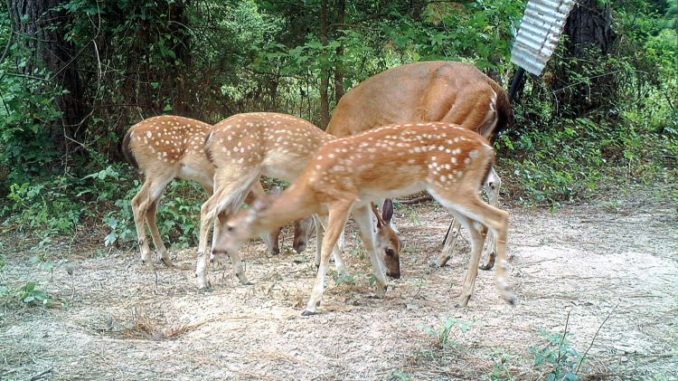
It’s important to report your harvest
About the end of June, I started receiving emailed photographs of newly born fawns. The fawn drop was on in Area 4, right on schedule and right on time for the deer season that opens in October.
Some of you in the early rut areas will hunt deer this month, and hunter observations during the archery season provide data on fawn production and survival.
Hunters also will fire the first shots at doves, and it is not too hard to tell which birds are young of the year.
Likewise the duck hunters will be shooting teal, and biologists will be examining wings while making bag checks to see determine the adult/juvenile ratio in an effort to gather information about duck production and survival.
Our LDWF turkey biologist, Cody Cedotal, has sent the annual poult survey to hunting clubs and landowners in an effort to gather data about the 2016 turkey hatch. The cameras on our property in East Feliciana Parish have documented a pretty good hatch of turkeys, which we need because the big population of turkeys we had last year disappeared after the flooding rain we had in March.
Hunting seasons and bag limits are set so the harvest does not have an impact on the wildlife population.
For the most part, seasons and bag limits do not change much from year to year.
For a long time now, we have had a six deer limit, which some people complain is too much — but harvest data shows a small percentage of hunters actually harvest six deer. Most hunters are fortunate to kill one deer, and half the hunters put no venison in the freezer.
We have seen a return to doe days in some of the areas in the state in response to a decline in deer numbers in those regions.
Northwest Louisiana continues to lead the state in deer harvest numbers, and the season structure of every day being a doe day remains in effect.
The buck limit was reduced years ago in an effort to increase the state herd’s adult buck age structure, and this seems to be working.
The turkey bag limit was reduced from three to two birds, and the 37-day season many hunters enjoyed was reduced to 30 days.
Tagging was initiated in an effort to better document turkey and deer harvests.
Toms born this year will be the jakes next spring, making them legal to kill. Harvest data show that about 25 percent of the annual turkey harvest is jakes. Adult toms are more vulnerable to hunters’ calls, with as much as 50 percent of adults birds being harvested in some populations around the state.
Harvest information is very important for wildlife biologists to make sound management decisions, so it is very important that you report your harvest.
Our small-game populations of squirrels and rabbits continue to have long seasons with limits that have not changed in years.
Squirrels produce two crops of young each year, and when the fall season opens the second crop of squirrels is being weaned.
Research work in Louisiana has found rabbits pretty much breed the entire year, with females producing several new bunny crops annually.
While quail numbers continue to be low, the bag limit has remained the same. Again, biologists feel the bag limit can remain unchanged because of the low number of quail hunters pursuing a limited resource, allowing hunters to harvest birds that have a short life span.
Woodcock hunters have probably been the group most impacted with reduced bag limits.
Duck hunters have had long seasons with six-bird limits, and we saw an increase in the woodduck daily bag limit — but it took some hard work from biologists to make this happen.
We are blessed in the Bayou State to have long hunting seasons with plenty of opportunities. Of course, habitat is the key for wildlife numbers to remain good.
With good habitat, wildlife should have good reproduction, and that increases population numbers and allows hunters opportunity to harvest the surplus.
With white-tailed deer, it’s usually acceptable to harvest 30 percent of the annual population because the annual increase should match that.
Deer hunters often ask the question how many deer — especially does — should be harvested from their properies. LDWF biologists cam provide clubs or landowners with harvest recommendations because they gather harvest data each season and look at the physical condition and productivity of deer.
The trend these days is to shoot only magazine-cover bucks and keep the doe harvest low so we can have “lots more deer.” Because of this, I am seeing herds that are being under-harvested and bucks that are dying of old age because hunters are unable to field-age them.
Last season, I killed a 1½-year-old doe on a tract of land that weighed 65 pounds — about 35 pounds less than the desired weight for a doe in this age class. It was apparent that habitat conditions are unable to maintain this herd in a healthy condition.
Data collection is a must for clubs or landowners really wanting to know what is going on with their deer populations. However, knowledge of what is going on is only good if it is actually applied.
If your deer herd has problems and you do nothing to correct the problem — other than what you do year after year — you should not expect to harvest that magazine-cover buck.


